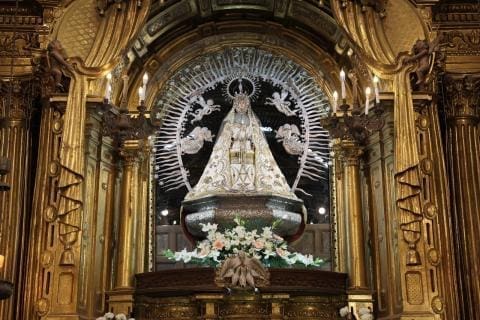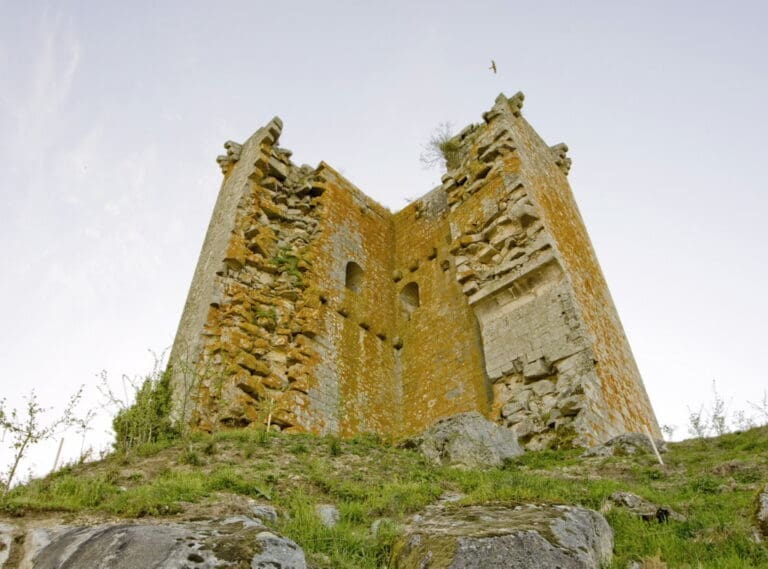In 1624, after a miracle attributed to the Virgin of the Ermitas, the Bishop of Astorga Alonso Messía de Tovar ordered the construction of a large sanctuary despite the fact that there was already a small chapel in her honor at that location. Over time, this sanctuary became one of the most important pilgrimage centers in the northwest of the peninsula and a major religious center in Galicia. The temple consists of 3 naves separated by pillars and semicircular arches. It has a transverse nave that gives it the shape of a Latin cross. The wooden ceiling of the central nave features paintings dedicated to the Virgin dating from between 1728 and 1730; the work of the Compostela artist Francisco Conselo de Villar. In the presbytery, the silver altar and the wooden altarpiece with a golden finish stand out. The Via Crucis is one of the hallmarks of this sanctuary. The quality of its carvings places it among the best in the world. It represents up to 15 stations corresponding to 15 episodes of the Passion of Christ. The atrium of the sanctuary is a place for religious ceremonies such as the “Desenclavo” or the “Estoupada do Xudas” and is also a place of leisure for the elderly and a recreational space for children. In its four corners, we find the first four stations of the Via Crucis; compositions of colored pebbles that form figures on the ground. In the center of the square, there is a cruceiro with a square base and five steps on which stands a column topped with a cross featuring representations of Jesus Crucified and the Virgin with her child in her arms after the Desenclavo. About 100 meters from the temple, going up the street towards the Resurrection, we find a stone fountain that the locals call “A Dormiñona”. It was built at the beginning of the 18th century and is currently one of the main sources of drinking water for the locals. The Virgin of the Ermitas is the Lady par excellence of the eastern mountains of Galicia. Legend has it that her image was found in a cave by some shepherds, and in that very place, a small hermitage was built in her honor, of which no remains exist today after its elimination in the 19th century. From a scientific point of view, beneath the modern additions, the image of the Virgin of the Ermitas is a medieval image from the 13th – 14th century made of polychrome wood, 58 centimeters tall, from which the original hands and child were removed. At the beginning of the 18th century, false hair was added. The ensemble is completed with silver ornaments (crown and over-crown), the halo, and the little angels on either side.



 Province of Ourense, Galicia
Province of Ourense, Galicia





